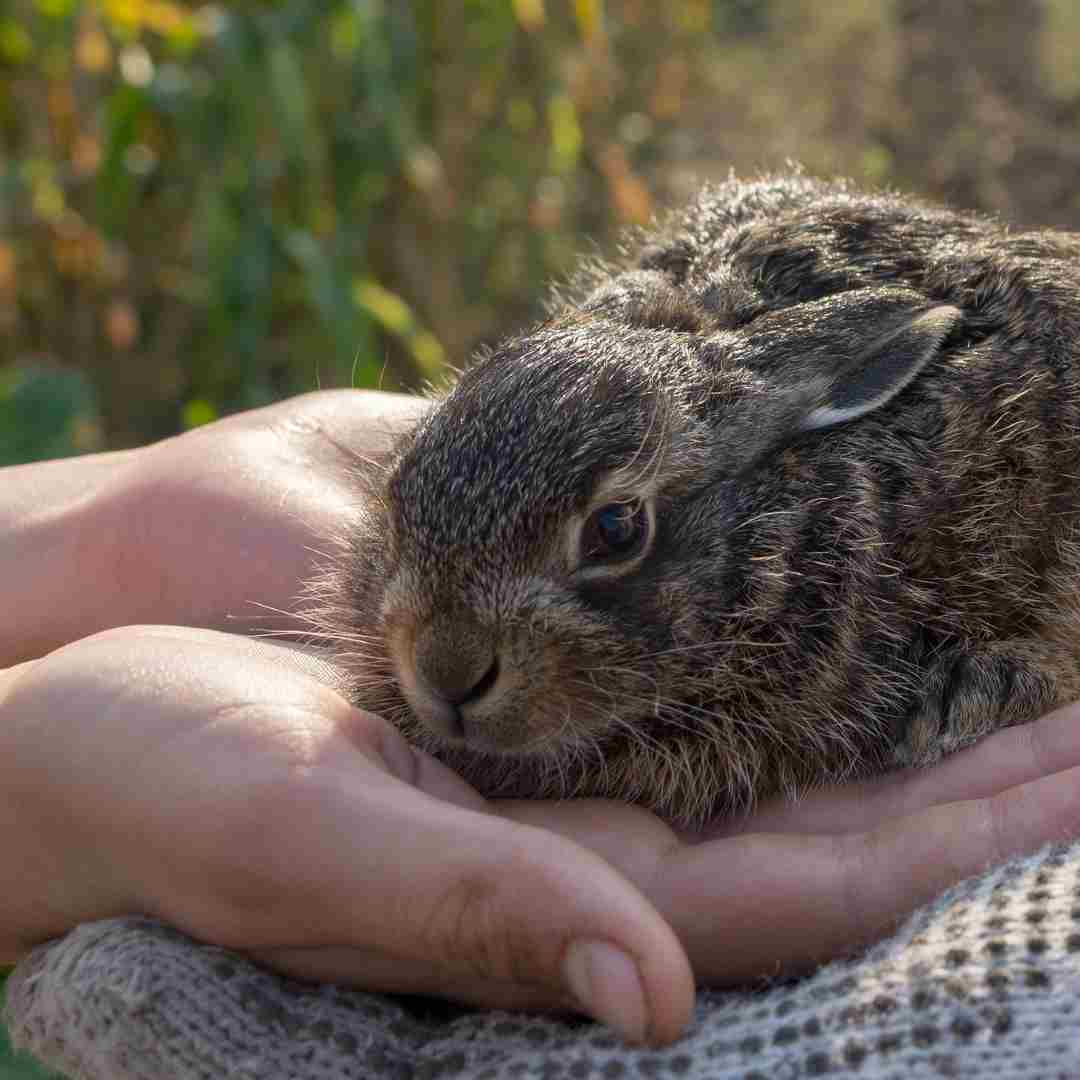How Rabbits and Humans Act Similar
Both rabbits and humans are sociable animals, hence they have many comparable behaviours. Rabbits and humans groom, cuddle, and play to bond.
Rabbits and humans groom. Rabbits lick and nibble each other's fur to keep it clean and parasite-free. Most humans groom each other with a brush or comb. Both species express affection and bond through grooming.
Rabbits and humans cuddle. Rabbits snuggle in piles to stay warm and show affection. People cuddle to convey love and affection.
Rabbits and humans play. Hopping, chasing, and wrestling are rabbit games. Humans play games and sports together. Playing helps both animals bond and have fun.
Finally, rabbits and humans groom, cuddle, and play. Both species demonstrate affection and enjoy pleasure through these social bonding behaviours.
Benefits of Rabbit Pets
Pet rabbits are growing more popular for good reason. Intelligent, gregarious animals, they create close ties with their owners. Both rabbits and owners benefit from having them as pets.
Rabbits are low-maintenance pets. They need hay, fresh veggies, and a few pellets. They need daily exercise and a secure hutch or cage. Rabbits are quiet, making them perfect for apartments and other tiny places.
Bunnies are gregarious and build deep ties with their owners. They can learn litter box use and simple tricks. Rabbits love to engage with their owners and are affectionate.
Rabbits can improve owners' health. Spending time with a pet or rabbit can alleviate stress and anxiety and boost happiness. Rabbits can reduce loneliness and provide company.
Finally, families can benefit from rabbits. They are friendly and entertaining for kids. Rabbits may also teach kids responsibility and animal care.
Keeping rabbits as pets can benefit both the owner and the rabbit. They are low-maintenance, bond well with their owners, and provide health benefits. They also bring company and amusement to families.
Exploring Rabbit Social Behaviour
Rabbits are gregarious and like company. They build close ties with peers and can get depressed if left alone. Understanding rabbit social patterns helps provide the best care.
Rabbits are gregarious and enjoy groups. They live in enormous colonies with complicated social systems in the wild. Captive rabbits should be housed in pairs or small groups of compatible animals. Lonely rabbits may have behavioural issues.
Body language and vocalisations let rabbits communicate. Their emotions are expressed through postures and facial expressions. Purring, growling, and banging are additional sounds. Rabbits also communicate via scent.
Rabbits are playful too. They like chasing, tag, and digging. They like playing with toys and exploring. Lots of toys and activities can keep rabbits engaged and avoid boredom.
Rabbits bond by grooming. Licking and nibbling each other shows affection and strengthens social relationships. Rabbits love snuggling too.
Social rabbits require company to keep healthy and happy. Engaging them in activities and socialising with other rabbits helps keep them happy and prevent behavioural issues. Understanding rabbit social patterns is crucial to delivering the optimum care.
Rabbit-Human Communication
Though they speak differently, humans and rabbits can understand one other. Rabbits communicate by body language, while humans use words and nonverbal signs.
Rabits express emotions and intentions through body language. They pound their rear legs to exhibit fear or anger or twitch their noses to demonstrate curiosity. They may also stand on their hind legs to demonstrate interest. Rabbits also communicate by lifting their eyebrows or expanding their eyes.
Humans and rabbits communicate verbally and nonverbally. Positive reinforcement and a soothing voice are verbal cues. Pointing, clapping, and eye contact are nonverbal cues.
Rabbits and humans interact through touch. Petting a rabbit builds trust and bonding. Gentleness and not frightening the bunny are key.
Humans and rabbits interact via fragrance. Rabbits smell well and can detect pheromones, which animals use to communicate. Humans can relax rabbits using lavender or chamomile.
Humans and rabbits converse vocally. Rabbits recognise their owners' voices and respond to whistling and clapping.
Understanding how humans and rabbits interact can strengthen our friendship and understanding.
Genetics in Rabbit and Human Development
Human and rabbit development depend on genetics. Both animals carry genetic information from parent to offspring, which affects offspring characteristics. In rabbits, parental genes control offspring colour, size, and other physical traits. Humans inherit genetic information from their parents, which shapes their physical, mental, and emotional traits.
In rabbits, parental genes control offspring colour, size, and other physical traits. When two black-furred rabbits mate, their progeny will likely be black. The progeny of two white-furred rabbits will likely have white fur. Parents' sizes also determine offspring size. Two huge rabbits mating will produce larger offspring than two little rabbits.
Humans inherit genetic information from their parents, which shapes their physical, mental, and emotional traits. If brown-eyed parents mate, their children will likely have brown eyes. When blue-eyed parents mate, their children will likely have blue eyes. Parental mental and emotional traits will also influence child mental and emotional traits. Couples with calm temperaments usually have tranquil children.
In conclusion, genetics shape rabbit and human growth. In rabbits, parental genes control offspring colour, size, and other physical traits. Humans inherit genetic information from their parents, which shapes their physical, mental, and emotional traits.